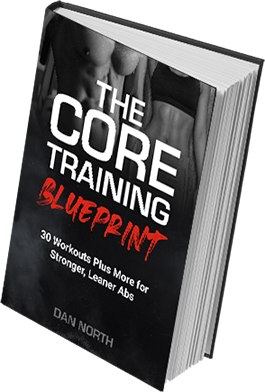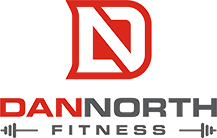If you’re serious about your training, prolonged breaks are few and far between. But sometimes life happens, and you’re forced to sit on the couch instead of doing deadlifts.
Whether it’s due to injury or vacation, occasionally we’re forced to put lifting on the backburner. And while it may be a worst-case scenario for many of us, a brief hiatus from the gym can actually favour your long-term progress.
The catch? Many lifters will often overestimate their ability coming off a break, typically resulting in prolonged plateaus or even worse, injury.
That’s not to say there isn’t a better way to make your gym comeback.
There are some key strategies you can use to make your lifting comeback a long-term success instead of a short-term tragedy.
Before we get into those, there are some things you need to accept when coming back from a lay off. By the way, we’re talking a layoff of several weeks or even months, not after a long weekend of drinking at the cottage.
- You will be weaker. Your training age will determine the impact your layoff has on your strength and how quickly you’ll regain it. For example, someone whose been lifting 20+ years is going to retain a higher percentage of their total strength after a layoff as opposed to someone whose only been lifting for a couple months.
- You will be less conditioned. Strength is proven to have a better “memory” than conditioning, so don’t be surprised if you’re huffing and puffing your way around the gym your first few sessions back.
- You will be sore as hell. Ah, remember when you first started lifting and could barely put your shirt on the next day? Be prepared for heavy DOMS.
- You will have a false sense of confidence. Prolonged breaks can breed a false sense of confidence in lifters. They equate feeling rested to being strong, but quickly realize this isn’t the case when they can barely breathe after an 80% warm-up set.
So, with all the mistakes laid out on the table, what can you do to make your gym comeback as successful as possible?

1. GPP FOR THE FIRST 1-2 WEEKS IS PROBABLY A GOOD IDEA.
General physical preparedness gives you the chance to re-establish a foundation to build on. More often than not, lifters will jump back into their training program prematurely, trying to pick things up where they left off. This usually doesn’t last past the first workout.
Instead, take a couple steps back and ease your way into your training.
Training considerations for GPP:
- Full body workouts
- 3-4 times per week
- 4-6 exercises per workout
- 15-20 reps for 2-3 sets each
- Focus on high quality movement
- Focus on breathing and core engagement
- DO NOT go to failure or max out
2. LESS IS MORE.
Branching off the concept of general preparedness, less is often more in terms of your post-layoff training protocol.
I remember going to Ghana several years ago and for the first and only time since high school, I didn’t lift weights for 3 weeks. To say I came back looking like a shadow of myself is an understatement, and my colleagues made sure I knew it.
My first workout back I was amped and couldn’t wait to attack the weight room. I had planned a full body session, basically doing any exercise I could think of.
That first workout lasted maybe 15 min.
I was cocky and thought I could jump back into training like nothing happened. I tried matching my pre-layoff intensity after not touching a barbell for almost a month.
I quickly realized that I needed to dial back the intensity and volume if I was going to make a successful comeback.
3. TAKE YOUR WARM-UPS SERIOUSLY.
99% of lifters and gym-goers dismiss their warm-ups. They just want to get after it.
While the warm-up is an integral part of any effective program, it is essential when coming back from a layoff.
Here’s what a typical warm-up includes with most of my clients, for your consideration:
- 3-5 min of low-impact cardio. Aside from increasing your blood flow and heart rate, this gives you a chance to mentally dial-in to your training.
- 2-3 min of soft-tissue work. Foam rolling and other SMR techniques to alleviate stress and prime your muscles for loading.
- 2-3 active mobility drills. Movement-based drills that actively open your joint range of motion.
- 2-3 core engagement exercises. All training sessions incorporate your core in one way or another. Dead bugs, Pallof presses, and other anti-extension or anti-rotational exercises are typically performed prior to loading.
- 1-2 dynamic exercises. Stimulate your nervous system towards the end of your warm-up to optimize strength and power output. For example, box jumps before squats or explosive push-ups before benching.
4. TAKE YOUR RECOVERY SERIOUSLY.
Overtraining is a term that gets tossed around loosely, and it usually doesn’t apply to the masses. Most lifters under-recover, negating the effects of their training and putting any potential strength gains to an abrupt halt.
As noted earlier, you’re probably going to experience greater DOMS after coming off a training layoff. This is your body’s not-so-subtle reminder to focus on recovery just as much as, if not more than, your training.
So be sure to get your z’s in, stay hydrated, and eat protein. All of the things you should be doing if you want to see progress, regardless of whether or not you’re coming back from a layoff.
5. FOCUS ON BUILDING BACK YOUR STRENGTH, NOT TESTING IT.
The strongest people are those who focus on building their strength, rather than testing it. They view each individual session as an opportunity to bring them one step closer to their ultimate goal, treating it like a building block.
It’s the consistent accumulation of these building blocks over time that ultimately dictate your level of strength.
Here are some things to consider when you’re initially building your strength back:
- Sub-maximal loading. There’s no need to max out just yet, grasshopper.
- Volume over intensity. Nothing crazy, just get your movement in and prioritize optimal volume over going balls to the wall every session.
- Reduce your 1RM by 5-10%. If your max squat was 300lbs before your layoff, it’s probably a good idea to be modest with your weight projections during the first few initial weeks of lifting.
For example, if your program calls for 3 sets of 10 at 65% 1RM, your working weight would be 195lbs (based on a 300lbs 1RM). It’s probably a good idea to reduce this by about 5-10% so you can complete high quality reps for full sets and give your body a chance to work it’s way back into training. - Focus on completing reps. Not to sound like a broken record, but strength is built on completed reps, not failed ones.
Summary
The occasional break from training can offer some incredible ongoing benefits to your strength and performance. Be patient and leave your ego at the door when making your return to the iron so you can reap the rewards.





